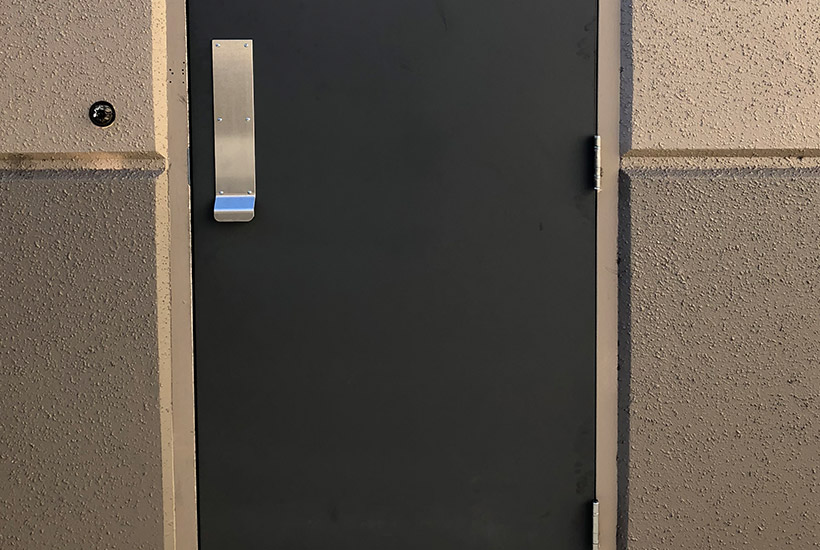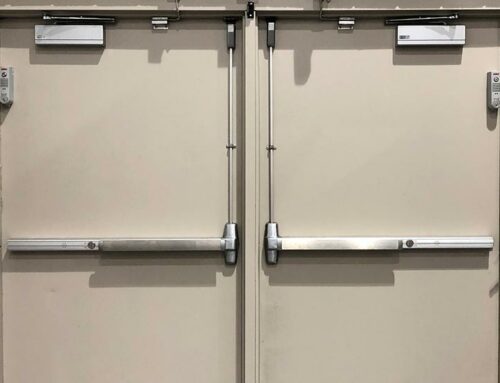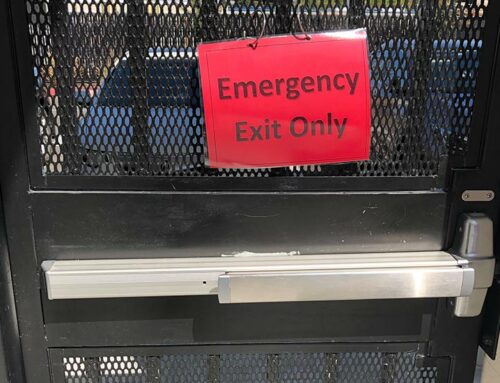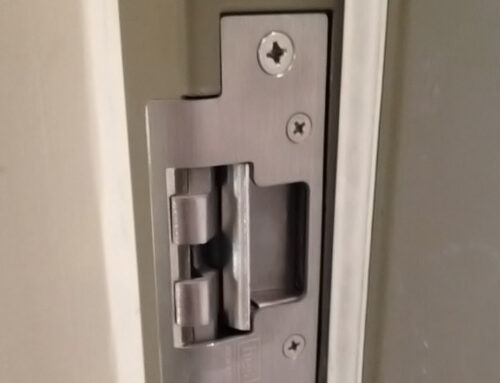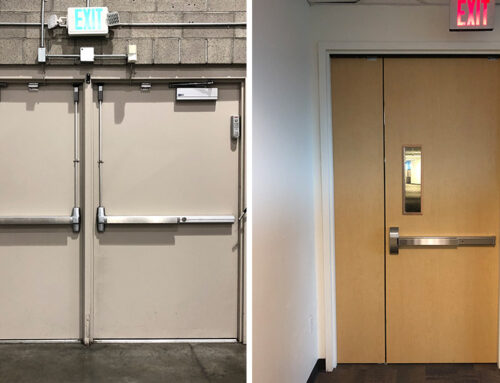Despite their name, hollow metal doors aren’t exactly hollow. They have soft door cores which are surrounded by metal plating on all sides. The metal is usually stainless steel. These doors look like they are made of solid metal, but they’re lighter, they’re more affordable, and they’re highly practical for any kind of commercial door need you have. While many of the benefits of hollow metal doors are about their practicalities, they also look great too.
Details of Hollow Metal Door Construction
Hollow metal doors are made of sheet metal, typically stainless steel, that is channel reinforced. This provides durability, strength, and good looks. They are less likely to warp in different temperatures than other door types. They are available in a range of finished and even with decorative panels or other flourishes. They also offer a long lifespan. With solid construction and proper care, hollow metal doors typically will last ten to fifteen years.
Behind the metal of the door is some kind of core material. There are generally four options for these cores:
- Honeycomb: A less expensive option that still provides some fire resistance. The inner material is arranged in a honeycomb shape.
- Polystyrene: This foam option provides more insulation than honeycomb and usually about the same fire resistance.
- Polyurethane: Another plastic-like material, polyurethane offers the most insulation and it expands to fill every nook of the metal shell. However, the material is not suitable for fire resistance.
- Mineral core: For industrial applications where extreme heat or fire risk is a challenge, mineral core doors are best. These cores significantly slow down heat transfer, reducing the impact of heat during normal operations or allowing people to pass by the door more safely in the event of a fire.
You can also strengthen these doors by adding internal steel bars and putting one of the above materials in the gaps that are left behind. This adds significant strength to the door and is ideal for back-of-house security.
Types and Features of Hollow Metal Doors
Hollow metal doors can have various other features which might make them more suitable for your uses. For example, hollow metal doors can serve as fire doors which limit the spread of flames and the impact of heat. Every door should have a fire rating so you can assess its suitability for your needs.
Hollow metal doors may also be designed to be flush, they may have windows, or they may even be designed to look like wood doors.
Applications for Hollow Metal Doors
Hollow metal doors are often back-of-house doors. They are useful as they project strength and can have hardware that makes them more secure, as with steel-stiffened doors. In general, hollow metal doors are often used inside of facilities, especially for doors that need increased strength, or which are only for personnel and not for clients. Of course, hollow metal doors can be stylish and there is no reason you can’t use them for other door applications.
If you’re considering hollow metal doors, a commercial door professional in Livermore can help you assess if these doors are right for your facility.

